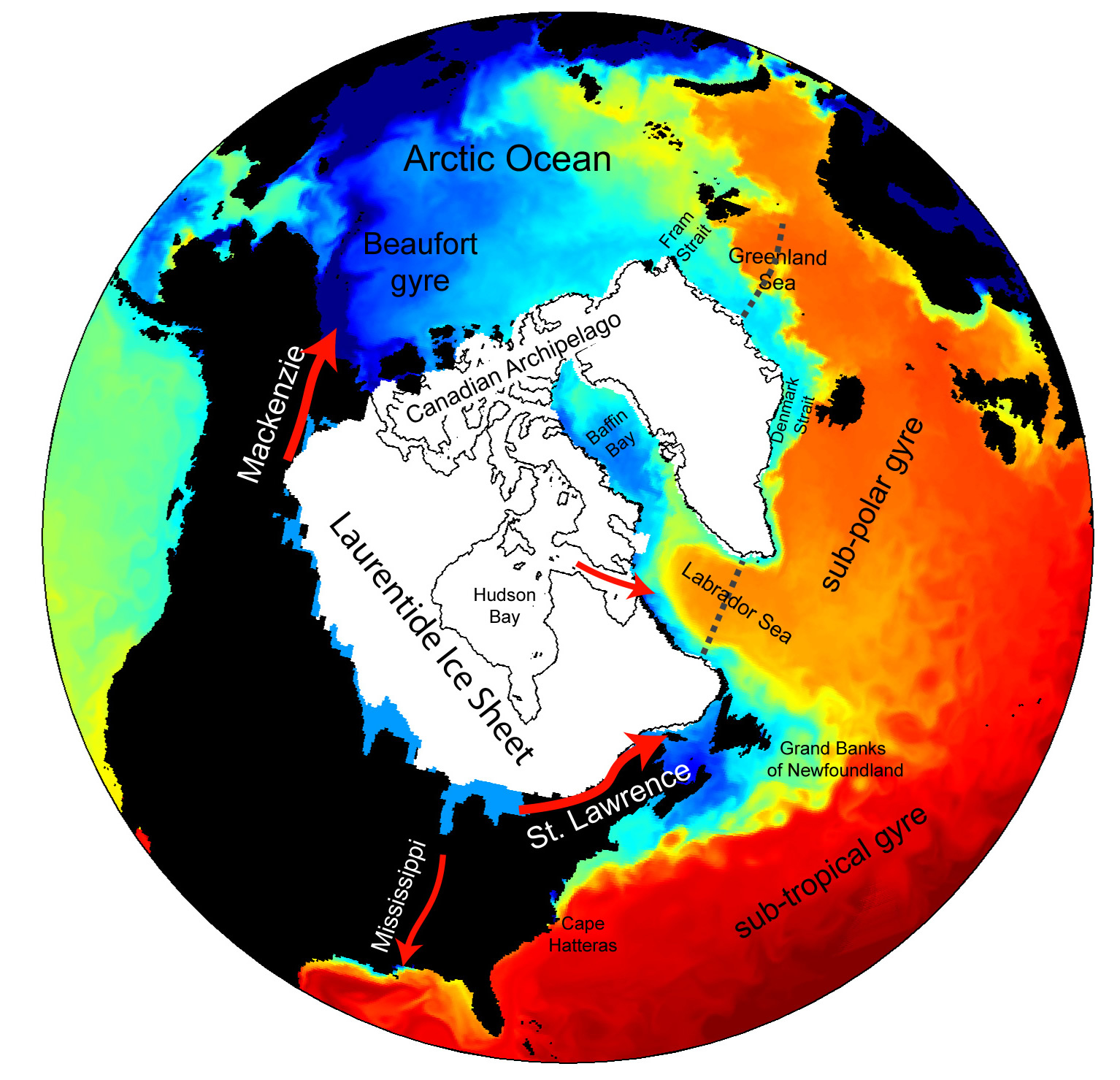|
The Younger Dryas(YD) —the last major cold episode on Earth—is thought to have been triggered by a meltwater flood into the North Atlantic. The subsequent freshening of the subpolar gyre is thought to have suppressed the sinking limb of the Atlantic Meridional Overturning Circulation (AMOC) and reduced the northward transport of heat to the poles. As a result of a weakened AMOC, the relatively warm climate of the Allerød episode abruptly ended and the YD began. It was originally hypothesized that the flood waters were supplied to the ocean from the St. Lawrence Valley. However, the evidence for a meltwater flood in this regional is controversial and inclusive.
Recent terrestrial evidence from the Mackenzie delta suggests that the flood waters might have initially discharged into the Arctic Ocean. In addition, high resolution modeling now suggests that meltwater from the Arctic is extremely effective at weakening the strength of the AMOC (Condron and Winsor, 2012)
This NSF funded project will retrieve sediment cores in August 2013 from the Mackenzie Trough and M'Clure Strait and analyses them to see if there is evidence that meltwater discharged to the ocean via this northern route at the start of the YD. In addition, a suite of high-resolution model simulations using MITgcm are being undertaken to examine the impact of a meltwater discharge from the Arctic on ocean circulation and the climate system. This website mainly provides details of this modeling effort (lead by PI Alan Condron), and will be updated to provide public access to model output and model code develops made to MITgcm. |
 Above: Proposed meltwater routes to the ocean from glacial lakes along the southern edge of the Laurentide Ice Sheet (LIS) during the last deglaciation (~21,000 years to present). This image is from Condron and Winsor (2012, PNAS).
Above: Proposed meltwater routes to the ocean from glacial lakes along the southern edge of the Laurentide Ice Sheet (LIS) during the last deglaciation (~21,000 years to present). This image is from Condron and Winsor (2012, PNAS). |